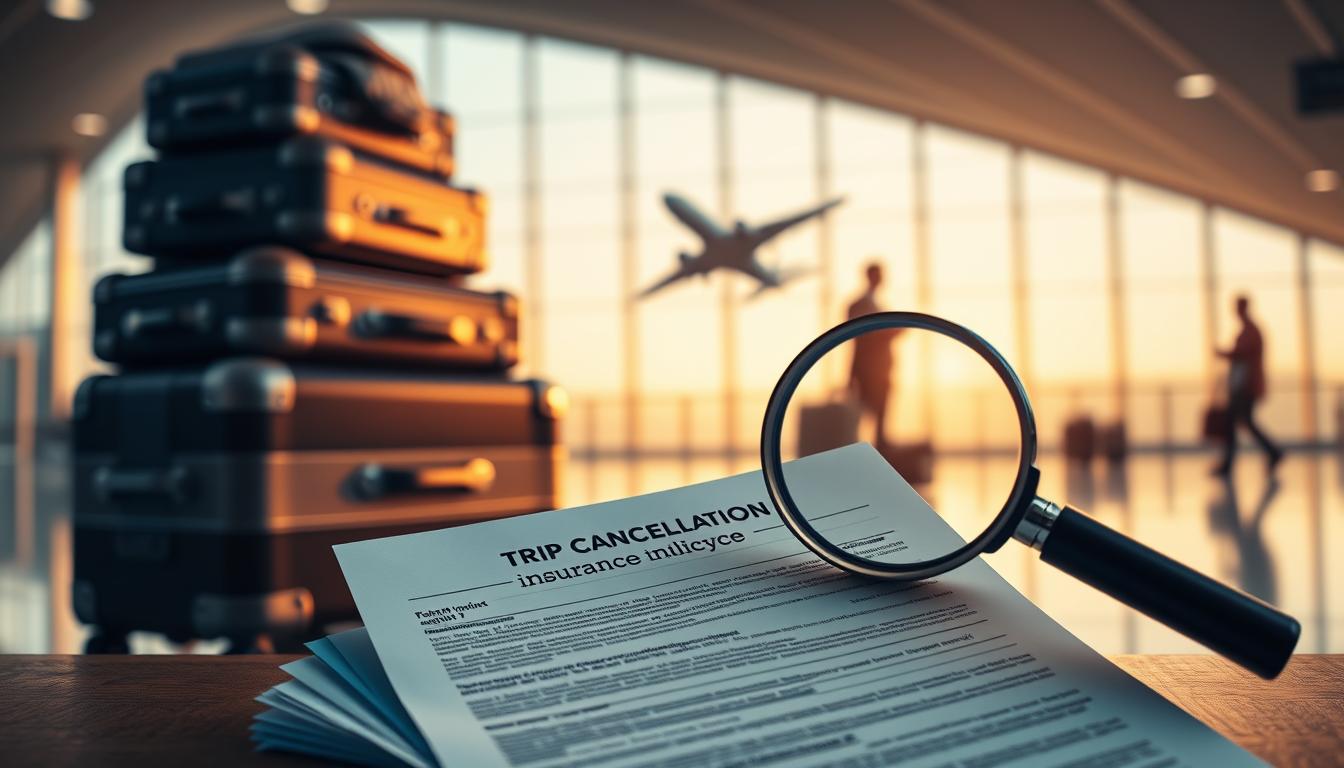Curious whether that extra policy will protect your plans or just drain your funds? You’re asking a smart question before a big vacation, and we’ll walk this through clearly.
Think of your trip as an investment. If canceling would wipe out significant prepaid bookings, the right plan can safeguard your money and calm your nerves.
Common add-ons like CFAR often return about 50–75% of prepaid nonrefundable costs when you cancel a few days before departure and buy the option within 14–21 days of your first deposit.
International medical care and evacuation can exceed $50,000 in some cases. Card perks help sometimes, but they often leave gaps in medical and evacuation coverage.
We’ll preview what policies cover—trip issues, baggage hiccups, and emergency care—so you only pay for what matches your destination and stress level.
By the end, you’ll know when a small extra cost offers real protection and when that money is better spent on the experience itself.
What this Buyer’s Guide Covers and How to Decide Today
We’ll cut through jargon so you can decide which protections matter for your next trip.
Fast summary: We compare comprehensive policies with credit card benefits, note CFAR timing (buy within 14–21 days of first payment; cancel at least 2–3 days before departure), and flag that international evacuation can top $50,000.
- Quick checklist: prepaid expenses, health care access, and the situations you worry about most.
- Simple options: protect big-ticket items, pick a broad plan, or rely on card perks if limits suit your needs.
- Shopping help: use InsureMyTrip or SquareMouth to compare multiple insurers in minutes.
| Option | Best for | Key perk |
|---|---|---|
| Comprehensive policy | High nonrefundable trip costs | Trip cancellation + medical evacuation |
| Credit card benefits | Low-cost, short trips | Secondary coverage for some expenses |
| CFAR add-on | Flexible plans, early purchase | Partial reimbursement for many reasons |
What Travel Insurance Covers—and What It Doesn’t
Not every plan covers every problem—here’s what most policies actually protect and what they leave out.
Core protections usually center on trip cancellation and interruption for covered reasons. Plans also include emergency medical, emergency medical transport, baggage loss or delay, and travel delay benefits.
Core protections
Typical limits vary: some OneTrip-style policies offer up to $100,000 for trip cancellation, $150,000 for interruption, $25,000 for emergency medical, and large sums for medical transport.
Policy types
Choose single-trip for one getaway, multi-trip or annual plans for frequent departures, or family plans that cover multiple people on one policy. Pick a plan that matches trip cost and destination risk.
Key exclusions
Common exclusions include pre-existing conditions unless you buy within a required window and were fit to travel when you booked. Risky pursuits often need an adventure add-on. War, terrorism, and alcohol- or drug-related incidents are usually excluded.
CFAR—Cancel For Any Reason
CFAR can return about 50–75% of prepaid nonrefundable expenses (some plans note up to 80%) if purchased within 14–21 days of your initial deposit and you cancel a few days before departure. Read the terms closely.
- Keep receipts: flight or hotel cancellations and baggage claims need documentation.
- Match limits: choose higher medical transport limits for international trips.
- Check windows: pre-existing condition waivers usually require early purchase.
| Feature | What it covers | Typical limits |
|---|---|---|
| Trip cancellation | Covered reasons; CFAR optional | $5,000–$100,000+ |
| Emergency medical | Medical care abroad | $25,000–$100,000+ |
| Medical transport | Evacuation to proper facility | $50,000–$500,000+ |
When Travel Insurance May Not Be Necessary
For many U.S. getaways, the extra cost adds little value when bookings are flexible.
Fully refundable bookings and low-cost trips
If your hotel and flights are refundable, cancellation coverage often duplicates protections you already have. Refundable fares or free changes remove most financial risk for short, inexpensive trips.
Domestic medical coverage
If you carry U.S.-based health insurance, routine care at home usually remains covered. That makes medical insurance in a policy less critical for stateside trips. Note: Medicare may not cover international care.
Carry-on-only and baggage choices
Travelers who pack carry-on only can skip baggage protections. The odds of lost luggage fall when you keep essentials with you, so that premium can fund experiences instead.
- Check refundable status before buying cancellation add-ons.
- Compare card perks and limits for quick domestic trips.
- Buy targeted options if one part of a trip is nonrefundable.
| Scenario | When coverage helps | When to skip |
|---|---|---|
| Fully refundable bookings | Minimal—only for peace of mind | Skip cancellation coverage |
| U.S. short trips | Rare medical gaps | Avoid full medical plans |
| Carry-on only | Replacement funds rarely needed | Skip baggage/luggage protection |
Is travel insurance worth it?
For many big trips, one expense — medical evacuation or a strict cruise rule — can eclipse the policy price. That makes a quick risk check helpful before you buy. Consider destination, prepaid costs, and the season.

International trips: gaps in health coverage and costly evacuations
Many U.S. health insurance plans won’t pay for care abroad, and Medicare rarely covers overseas care. A sudden illness can mean large bills.
Medical evacuation is the wildcard: an air ambulance from a remote spot can top $50,000. Strong evacuation limits matter for far-flung destinations.
High nonrefundable costs, cruises, group tours, and storm seasons
Cruises and group tours often enforce strict cancellation rules. If you paid a lot up front, trip cancellation and interruption coverage protect those expenses.
Buy early during hurricane or winter storm seasons — after a storm is named, new policies usually won’t cover that event.
Medical emergencies abroad: travel medical and evacuation considerations
Travel medical benefits help with hospital visits and prescriptions overseas. Evacuation coverage gets you to a proper facility or home when local care falls short.
CFAR adds flexibility if purchased within 14–21 days of your first deposit and used a few days before departure.
Baggage loss or delay: when replacement coverage matters
Lost or delayed luggage can wreck the first days of a trip. Replacement coverage pays for essentials so your plans don’t stall while claims process.
- If prepaid costs are high, favor comprehensive coverage combining trip and medical protection.
- For remote destinations, boost evacuation limits over basic medical amounts.
- For flexible plans, add CFAR during the policy purchase window for extra cancellation options.
| Situation | When coverage helps | Recommended protection |
|---|---|---|
| International trip | Domestic health insurance gaps; high medical bills | Travel medical + high evacuation limits |
| Cruise or group tour | Strict cancellation rules; large prepaid fees | Trip cancellation/interruption + CFAR optional |
| Hurricane/winter season | Named storms limit new policies | Buy early; consider CFAR if plans may change |
| Lost or delayed luggage | Need immediate replacements | Baggage delay/loss coverage |
What Travel Insurance Costs Right Now
Price tags vary a lot; understanding the drivers helps you match cost to real risk.
Major price drivers include total prepaid trip cost, destination risk, number of days away, and coverage level chosen.
Age, health, and planned activities also shape quotes. Longer or remote trips raise the chance of medical or evacuation needs, so premiums climb.
How much should you expect to pay?
One analysis found all-in-one comprehensive plans run about 56% higher than basic options, with an average near $164 per policy. Your real cost depends on trip value, where you go, and how long you stay.
- Basic plans focus on trip cancellation and delays and cost less.
- Comprehensive plans add medical care and evacuation and raise premiums.
- Card benefits may cover some losses, but often skip major medical or evacuation limits.
| Factor | Effect on price | What to check |
|---|---|---|
| Prepaid trip expenses | Higher premiums | Match limits to total losses |
| Destination & flights | Remote or tight connections increase cost | Raise evacuation limits if needed |
| Traveler profile | Older age or risky activities raise quotes | Disclose health and activities accurately |
Buy smart: compare quotes on sites like InsureMyTrip and SquareMouth, factor card perks, then prioritize trip cancellation, medical, and evacuation before adding extras. For a related case study, see our Airbnb policy analysis.
Credit Card Travel Insurance vs. Standalone Policies
Cards from premium issuers often include useful protections for common mishaps. You can get delay benefits, baggage help, rental coverage, and trip interruption limits. But fine print shapes whether a claim pays.
What premium cards typically cover—and common fine print limits
Typical perks include trip delay, cancellation/interruption, baggage delay or loss, rental car damage, and travel accident benefits.
Coverage caps sometimes run to $10,000 per person and $20,000 per trip for cancellation or interruption. Delay benefits often kick in after 6–12 days or hours, depending on the card’s terms.
Medical and evacuation gaps many cards don’t fill
Only select cards add emergency medical or dental benefits. Few include medical evacuation or large travel medical limits.
If you head overseas, this gap can leave you exposed to big bills and air ambulance costs. Annual fees on premium credit may exceed a single standalone policy price.
When to rely on card benefits—and when to stack a policy
Use card benefits for domestic trips with modest prepaid costs and when most purchases were made on that card. Confirm rules like round-trip requirements and who must pay.
- Stacking tip: add a travel medical or evacuation policy for international trips.
- Check caps: if prepaid losses exceed card limits, buy a comprehensive policy.
- Rental cars: compare primary vs. secondary card coverage before declining vendor options.
| Feature | Card coverage | Standalone policy |
|---|---|---|
| Cancellation/Interruption | $5k–$20k caps; strict rules | Higher limits; CFAR optional |
| Emergency medical | Rare; low limits | Robust travel medical options |
| Evacuation | Usually excluded | High limits available |
| Rental car | Primary or secondary | Optional add-on |
Where to Buy and How to Pick the Right Plan
Where you buy coverage can change how fast you get help and how simple a claim feels. Choose a sales channel that matches how much guidance you want and how complex your trip is.
Direct from insurers — Buy straight from Allianz, AXA, or Travel Guard if you want clear policy wording and brand support. Some firms list CFAR options and specific evacuation limits up front.
Through agents or OTAs — Travel agents and cruise checkouts add convenience. An agent can walk you through policy choices and confirm rental, baggage, and delay benefits.
- Compare multiple policies quickly on InsureMyTrip or SquareMouth to filter by benefits, price, and limits.
- AAA TripProtect (Allianz-powered) gives flexible tiers, SmartBenefits auto payouts for qualifying delays/baggage, and the Allyz TravelSmart app for claims and care.
- Many Allianz plans include free child benefits for kids 17 and under traveling with an insured adult.
Checklist before you buy: confirm evacuation and emergency medical limits, check CFAR purchase windows and reimbursement percent, and avoid duplicate rental or luggage coverage you already have on a card.
| Where to buy | Best for | Key advantage |
|---|---|---|
| Direct insurer | Clarity on policy wording | Full product detail; brand support |
| Agent / OTA | Personal guidance | Help matching options and filing claims |
| Comparison sites | Fast side-by-side quotes | Filter by benefits, price, and limits |
Conclusion
Think of this choice as hedging an important investment: protect what you cannot easily replace and skip what duplicates protections you already have.
For international trips, favor medical and evacuation coverage. For domestic getaways with refundable bookings, you may skip a full policy. CFAR can return roughly 50–75% (up to 80% on some plans) when bought in the required window.
Card benefits help in many cases, but confirm limits and gaps before relying on them. Compare plans side by side or talk with a trusted agent to match coverage to your real expenses and comfort level.
With a clear choice made, you can focus on the vacation ahead—more discovery, less worry, and a practical protection that lets you enjoy the trip.


